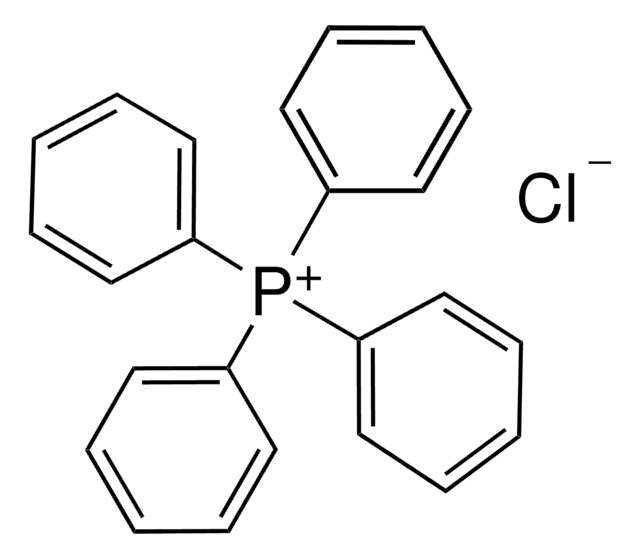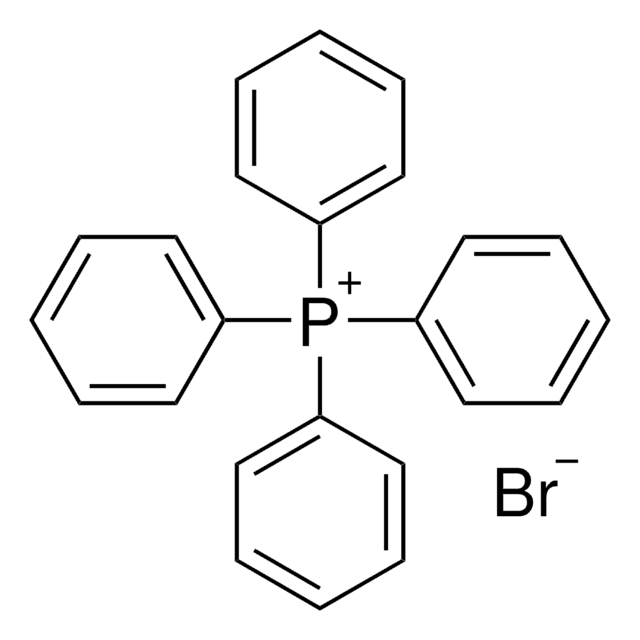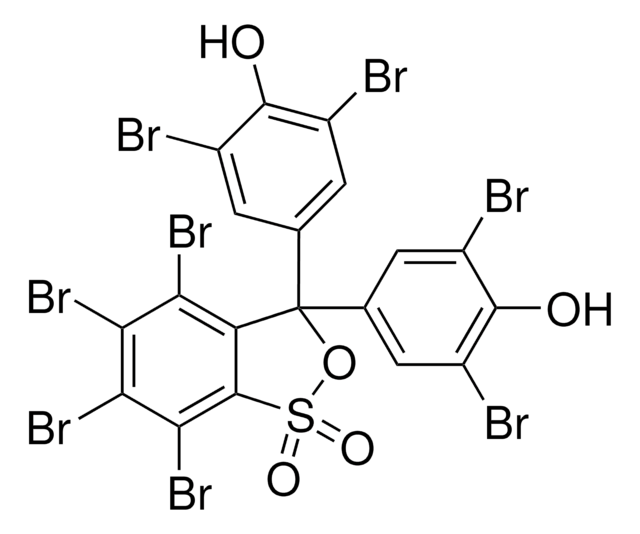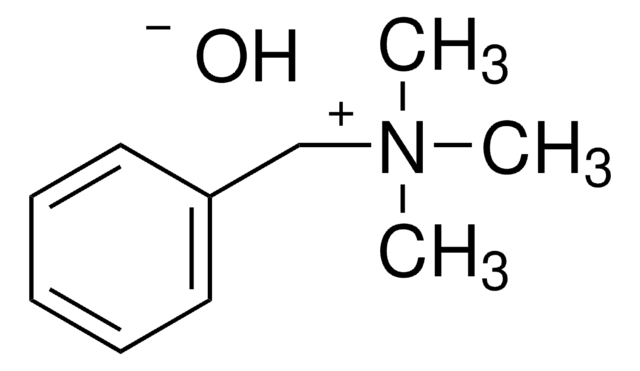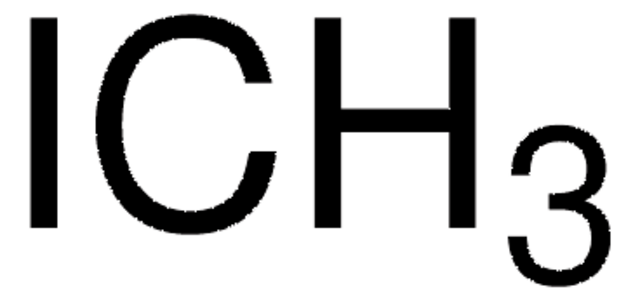223832
Bis(triphenylphosphoranylidene)ammonium chloride
97%
Sinonimo/i:
Bis(triphenylphosphine)iminium chloride, Hexaphenyldiphosphazenium chloride, PPNCl
About This Item
Prodotti consigliati
Livello qualitativo
Saggio
97%
Punto di fusione
270-272 °C (lit.)
Stringa SMILE
ClP(N=P(c1ccccc1)(c2ccccc2)c3ccccc3)(c4ccccc4)(c5ccccc5)c6ccccc6
InChI
1S/C36H30ClNP2/c37-40(34-25-13-4-14-26-34,35-27-15-5-16-28-35,36-29-17-6-18-30-36)38-39(31-19-7-1-8-20-31,32-21-9-2-10-22-32)33-23-11-3-12-24-33/h1-30H
QMTYWEYUVVWPQL-UHFFFAOYSA-N
Cerchi prodotti simili? Visita Guida al confronto tra prodotti
Categorie correlate
Applicazioni
Avvertenze
Warning
Indicazioni di pericolo
Consigli di prudenza
Classi di pericolo
Acute Tox. 4 Inhalation - Eye Irrit. 2 - Skin Irrit. 2 - STOT SE 3
Organi bersaglio
Respiratory system
Codice della classe di stoccaggio
11 - Combustible Solids
Classe di pericolosità dell'acqua (WGK)
WGK 3
Punto d’infiammabilità (°F)
Not applicable
Punto d’infiammabilità (°C)
Not applicable
Dispositivi di protezione individuale
dust mask type N95 (US), Eyeshields, Gloves
Scegli una delle versioni più recenti:
Possiedi già questo prodotto?
I documenti relativi ai prodotti acquistati recentemente sono disponibili nell’Archivio dei documenti.
Global Trade Item Number
| SKU | GTIN |
|---|---|
| 223832-250G | 4061833002254 |
| 223832-10G | 4061838778727 |
| 223832-50G | 4061833002261 |
Il team dei nostri ricercatori vanta grande esperienza in tutte le aree della ricerca quali Life Science, scienza dei materiali, sintesi chimica, cromatografia, discipline analitiche, ecc..
Contatta l'Assistenza Tecnica.